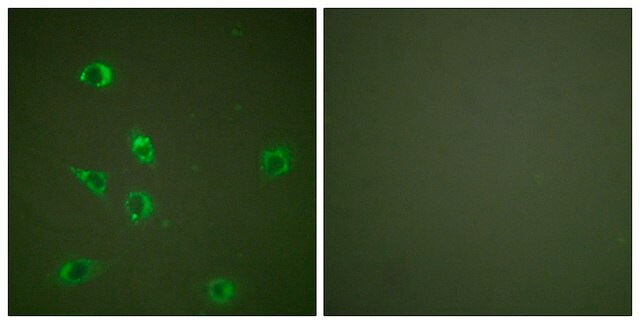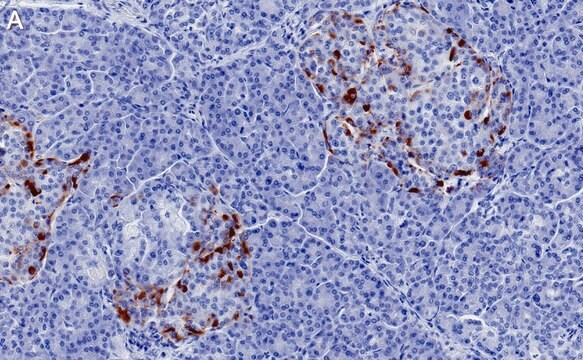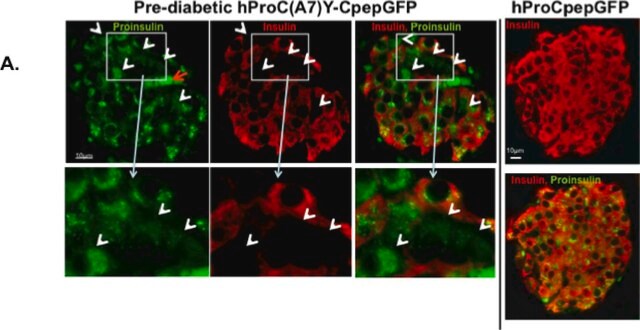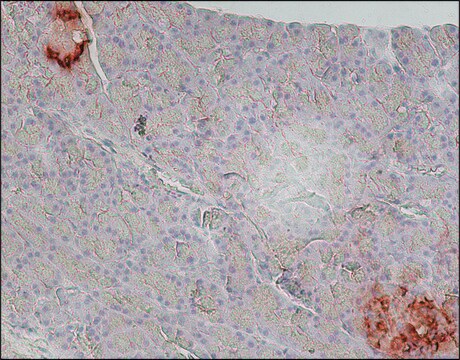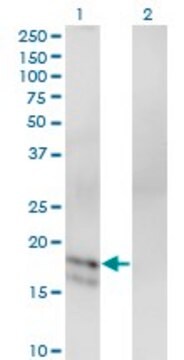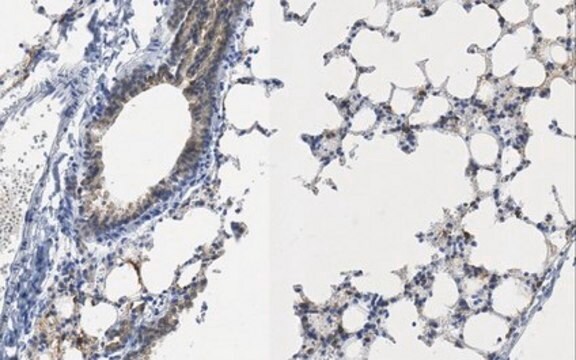MABN238
Anti-Glucagon Antibody, clone 13D11.33
clone 13D11.33, from mouse
Synonim(y):
4030-01F, 4031-01F, AB932
About This Item
Polecane produkty
pochodzenie biologiczne
mouse
Poziom jakości
forma przeciwciała
purified antibody
rodzaj przeciwciała
primary antibodies
klon
13D11.33, monoclonal
reaktywność gatunkowa
human, rat
metody
ELISA: suitable
immunofluorescence: suitable
immunohistochemistry: suitable (paraffin)
multiplexing: suitable
izotyp
IgG2bκ
numer dostępu NCBI
numer dostępu UniProt
Warunki transportu
wet ice
docelowa modyfikacja potranslacyjna
unmodified
informacje o genach
human ... GCG(2641)
Opis ogólny
Immunogen
Zastosowanie
ELISA Analysis: A representative lot detected Glucagon in ELISA.
Luminex® Analysis: A representative lot detected Glucagon in Luminex Assay.
Neuroscience
Sensory & PNS
Jakość
Immunofluorescence Analysis: A 1:8,000 dilution of this antibody detected Glucagon in normal rat pancreas tissue.
Opis wartości docelowych
Postać fizyczna
Przechowywanie i stabilność
Komentarz do analizy
Normal rat pancreas tissue
Inne uwagi
Informacje prawne
Oświadczenie o zrzeczeniu się odpowiedzialności
Nie możesz znaleźć właściwego produktu?
Wypróbuj nasz Narzędzie selektora produktów.
polecane
Kod klasy składowania
12 - Non Combustible Liquids
Klasa zagrożenia wodnego (WGK)
WGK 1
Temperatura zapłonu (°F)
Not applicable
Temperatura zapłonu (°C)
Not applicable
Certyfikaty analizy (CoA)
Poszukaj Certyfikaty analizy (CoA), wpisując numer partii/serii produktów. Numery serii i partii można znaleźć na etykiecie produktu po słowach „seria” lub „partia”.
Masz już ten produkt?
Dokumenty związane z niedawno zakupionymi produktami zostały zamieszczone w Bibliotece dokumentów.
Nasz zespół naukowców ma doświadczenie we wszystkich obszarach badań, w tym w naukach przyrodniczych, materiałoznawstwie, syntezie chemicznej, chromatografii, analityce i wielu innych dziedzinach.
Skontaktuj się z zespołem ds. pomocy technicznej
